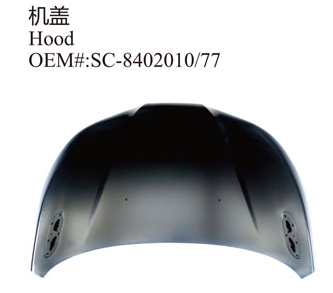CNC machining center is widely used in the current machining market, and the future development trend is very good. It can be said that most parts are related to CNC machining. Especially in the auto parts industry, the vast majority of products are processed by CNC. For example, bumper, instrument panel, door plate rotating shaft, transmission shaft, gear, gearbox, wheel hub, brake drum, etc., first process small parts through CNC, and then bond them.
At present, large-scale CNC machining has become an indispensable and important way of machining auto parts. You may encounter various problems when machining large-scale auto parts. For example, the surface finish of machined parts is not high, so what causes the low surface finish of auto parts CNC machining? Today, I would like to introduce in detail how to improve the CNC machining finish of auto parts.

1. If the CNC machining center is placed in an uneven position, it will produce vibration, which will affect the finish of workpiece processing. Therefore, to ensure the stability of the CNC machining center, we can better improve the finish of automobile parts CNC machining.
2. In the engineering of CNC machining, try to avoid the vibration of the main shaft when it is running at high speed, because the vibration will affect the smoothness of the workpiece to a great extent.
3. High quality coolant and sharp and wear-resistant cutting tools should be selected for CNC machining of auto parts.
4. The chip discharge groove of CNC machining should be opened well to avoid the scratch of workpiece caused by poor chip discharge and affect the smoothness of workpiece.
5. Before CNC machining, it is necessary to match the spindle speed and feed speed of the lathe.
Casting is a kind of production and processing method that the molten metal is poured into the cavity of metal mold, and the product is obtained after cooling and condensation. It is very common in the processing of automobile parts. In the process of automobile manufacturing, there are many parts made of cast iron, which account for about 10% of the weight of the whole vehicle, such as cylinder block, transmission case, steering gear case, rear axle case, brake drum, various supports, etc. Generally, sand mold is used to process and manufacture iron castings of automobile parts. The raw material of sand mold is mainly sand, which is mixed with adhesive and water. Sand mold materials need to have a certain bond strength, which is easy to be molded into the required shape and can resist the erosion of hot metal without collapse. In order to form a cavity in the sand mold that is consistent with the shape of the casting, it is necessary to make a solid model of wood, which is called wood mold. The volume of hot molten iron will be reduced after cooling. Therefore, the external dimension of the wood mold needs to be increased according to the shrinkage based on the original external dimension of the casting, and the surface that needs to be turned should be thickened accordingly.
In the manufacturing process of auto parts, forging is widely used. Forging is divided into free forging and solid model forging. Free forging is a kind of processing method that the metal blank is put on the anvil to bear the impact or pressure. The rough parts of automobile gears and shafts are processed by free forging. The solid model forging of automobile parts processing is a processing method that metal blank is put into the die bore of the forging die and is shaped under impact or pressure. Solid model forging is a bit like the process of dough being pressed into biscuit shape in the mold. Compared with free forging, the shape of steel parts made by die forging is more complex and the dimension is more accurate. Typical examples of die forgings for automobile parts processing are: engine connecting rod and crankshaft, automobile front axle, steering knuckle, etc.
Copyright By © Jiangsu Halreal Vehicle Industry Co., Ltd. Powered by Yicheng Network